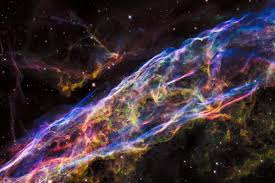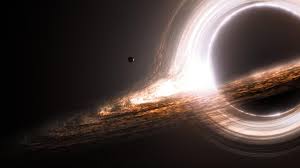Contents
- 1 The Nature of Interstellar Space
- 1.1 The Interstellar Medium and Its Components
- 1.2 The Role of Interstellar Space in Star Formation
- 1.3 The Journey of Interstellar Probes
- 1.4 Cosmic Rays in Interstellar Space
- 1.5 Magnetic Fields in Interstellar Space
- 1.6 Interstellar Travel and the Challenges Ahead
- 1.7 The Search for Interstellar Life
- 1.8 The Role of Interstellar Space in Galactic Evolution
- 1.9 Observing Interstellar Space
- 1.10 The Significance of Interstellar Space
- 1.11 Conclusion
- 2 Author
Interstellar space, the vast expanse between stars, is one of the most enigmatic regions of the universe. While it may appear empty at first glance, this region is filled with fascinating phenomena and elements that play a crucial role in the dynamics of galaxies. Interstellar space serves as a cosmic frontier, offering insights into the origins of stars, planets, and the intricate processes that shape the universe.
The Nature of Interstellar Space

Interstellar space is not a complete vacuum. It contains a diffuse mixture of gas, dust, and cosmic rays, collectively known as the interstellar medium (ISM). This medium is primarily composed of hydrogen and helium, with trace amounts of heavier elements. Despite its sparse density—averaging about one atom per cubic centimeter—it exerts a significant influence on galactic processes.
The ISM is divided into regions of varying density and temperature. Some areas are cold and dense, forming molecular clouds where stars are born. Others are hot and ionized, shaped by the energetic output of stars and supernovae. These different regions interact dynamically, creating a constantly evolving environment.
The Interstellar Medium and Its Components
The interstellar medium is categorized into three main components based on temperature and density:
- Cold Neutral Medium (CNM): This region is cooler, with temperatures around 50 to 100 Kelvin, and denser than other parts of the ISM. It primarily consists of neutral hydrogen and is often associated with star-forming regions.
- Warm Neutral Medium (WNM): Slightly warmer, with temperatures up to 10,000 Kelvin, the WNM is less dense and occupies a larger volume of interstellar space.
- Hot Ionized Medium (HIM): This component is heated to millions of degrees Kelvin by supernova explosions and contains ionized gas. The HIM fills the interstellar cavities created by stellar winds and supernovae.
In addition to gas, the ISM contains interstellar dust—microscopic particles composed of carbon, silicon, and other elements. These particles absorb and scatter light, creating the dark patches visible in some regions of the night sky.
The Role of Interstellar Space in Star Formation
Interstellar space is the birthplace of stars. In dense regions of the ISM, gravitational forces cause gas and dust to collapse, forming molecular clouds. Within these clouds, pockets of material become dense enough to ignite latoto nuclear fusion, giving rise to new stars.
The interaction of interstellar space with nearby stars also influences star formation. Stellar winds and radiation from massive stars compress surrounding gas, triggering the formation of additional stars in a process known as triggered star formation.
Supernovae, the explosive deaths of massive stars, further enrich the ISM with heavy elements and generate shock waves that compress gas, creating conditions for new star formation.
The Journey of Interstellar Probes

Interstellar space is not only a realm of cosmic processes but also a target for human exploration. The Voyager 1 and Voyager 2 spacecraft, launched in 1977, are the first human-made objects to enter interstellar space.
Voyager 1 crossed the heliopause—the boundary between the Sun’s influence and interstellar space—in 2012, followed by Voyager 2 in 2018. These probes continue to transmit data about the interstellar environment, including measurements of cosmic rays, magnetic fields, and interstellar plasma.
The information provided by the Voyager probes offers a unique glimpse into the conditions of interstellar space, deepening our understanding of the boundary between the solar system and the vastness beyond.
Cosmic Rays in Interstellar Space
One of the most intriguing aspects of interstellar space is the presence of cosmic rays—high-energy particles that travel through the galaxy at nearly the speed of light. These particles, composed of protons, electrons, and atomic nuclei, originate from a variety of sources, including supernovae, black holes, and other energetic cosmic events.
Cosmic rays play a significant role in shaping the ISM. They ionize interstellar gas, influence magnetic fields, and contribute to the chemical evolution of the galaxy. Understanding their origin and behavior is a key area of research in astrophysics.
Magnetic Fields in Interstellar Space
Interstellar space is permeated by weak magnetic fields, which play a critical role in the dynamics of the ISM. These fields influence the movement of charged particles, shape the structure of molecular clouds, and regulate star formation.
Magnetic fields are also responsible for the alignment of interstellar dust grains, which causes the polarization of starlight. By studying this polarization, astronomers can map the direction and strength of magnetic fields in interstellar space.
The origin of these magnetic fields is a topic of ongoing research. They are thought to be amplified and maintained by the motion of charged particles within the ISM, a process known as the galactic dynamo.
Interstellar Travel and the Challenges Ahead

The concept of interstellar travel has fascinated humanity for generations. While the Voyager probes represent the first steps into interstellar space, true interstellar travel—reaching other star systems—remains a distant goal.
The vast distances involved pose significant challenges. The nearest star system, Alpha Centauri, is about 4.37 light-years away, requiring travel speeds far beyond current technology. Advanced propulsion systems, such as light sails or fusion-based engines, are being explored as potential solutions.
The interstellar medium itself presents additional obstacles. High-speed travel through the ISM would expose spacecraft to collisions with gas and dust particles, which could cause damage. Shielding and innovative designs will be essential for future interstellar missions.
The Search for Interstellar Life
Interstellar space is also a focus for the search for extraterrestrial life. Organic molecules, the building blocks of life, have been detected in the ISM. These molecules, formed through complex chemical reactions in molecular clouds, could provide clues about the potential for life elsewhere in the galaxy.
The study of exoplanets—planets orbiting stars beyond our solar system—further underscores the connection between interstellar space and the search for life. The elements and molecules that form planetary systems originate in the ISM, making it a crucial link in the chain of life’s development.
The Role of Interstellar Space in Galactic Evolution
Interstellar space is integral to the evolution of galaxies. The exchange of gas and dust between stars and the ISM drives the cycle of star formation and death, shaping the structure and composition of galaxies.
Supernovae and stellar winds inject energy and heavy elements into the ISM, enriching it with the materials needed for new generations of stars and planets. This ongoing process ensures the renewal of galactic environments, maintaining their dynamic nature over billions of years.
Observing Interstellar Space
Advancements in technology have allowed astronomers to observe and study interstellar space with increasing precision. Radio telescopes, such as the Atacama Large Millimeter/submillimeter Array (ALMA), detect emissions from molecular clouds, revealing their composition and structure.
Infrared telescopes penetrate the dust of the ISM, uncovering regions of active star formation. Observations of interstellar absorption lines in the spectra of distant stars provide insights into the chemical makeup and dynamics of the ISM.
These observations not only enhance our understanding of interstellar space but also inform models of galaxy formation and evolution.
The Significance of Interstellar Space
Interstellar space is far more than a void between stars. It is a dynamic and complex environment that shapes the lifecycle of stars and planets, drives the evolution of galaxies, and connects the dots of the cosmic narrative.
Its study reveals the interconnectedness of the universe, highlighting the delicate balance of forces that govern its structure and processes. By exploring interstellar space, humanity not only uncovers the secrets of the cosmos but also deepens its understanding of its place in the universe.
Conclusion
Interstellar space is a frontier of exploration, filled with mysteries waiting to be uncovered. From the intricate dynamics of the interstellar medium to the challenges of interstellar travel, this vast expanse holds the keys to understanding the universe’s past, present, and future. As technology advances and new discoveries emerge, the study of interstellar space promises to reveal the profound beauty and complexity of the cosmos, inspiring generations to continue the journey into the stars.

